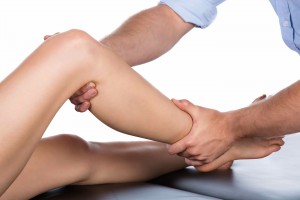by Adam Field, P.T.
Sharon had a long established relationship with a pain management doctor who prescribed a range of pain medications over the five years since her original work injury. It wasn’t long before mild anti-inflammatory medications progressed to narcotics. Sharon joked that she was a poster child for pain management as she adhered to a regimen of trigger point and epidural injections. Both initially helped, but the relief was short-lived.
In the three years following her lumbar fusion, Sharon tried to get back to exercising on several occasions, but couldn’t. The pain in her lower back had gotten worse. After a day’s work as an office manager, Sharon “just wanted to go home, take a pain pill, and lie down.”
During our initial consultation, Sharon realized that her pain wasn’t from daily life stresses, work pressures, or being out shape. She learned that her problems were due to chronic tissue restriction.
In examining Sharon’s posture, it was clear that she was crooked. Her pelvis was tilted abnormally and the muscles that ran along her surgical scar were pulling on her tailbone. This caused her left leg to appear as though it was longer than her right leg. She said, “That explains why I always feel as though I’m leaning to the right. My doctor told me I needed a shoe lift.”
We proceeded with the remaining part of the exam, which involved measuring Sharon’s legs. She was surprised when I told her they were the exact same length, and wondered why they appeared to be so uneven. I showed her a model of the human pelvis, and explained that tilting one way or the other would cause her legs to appear uneven. I explained that, over time, this would result in a painful torque in the spine that could radiate up to the shoulders and down to the ankles.
Using massage and myofascial release, Sharon was able to experience relief from the pain she was experiencing. Applying heat to her upper back while I worked on the area where her lumbar spine met her tailbone was extremely helpful. After our 50-minute session, Sharon said no longer felt the extremely painful pulling. She also said she felt less crooked, and that her back felt more relaxed and lengthened.
“But we haven’t done any exercises,” Sharon said when we finished. I showed her three simple stretches to enhance the treatment and reminded her that I did not want to waste her time with exercises she could do on her own. She thanked me and told me how excited she was to have found a treatment for her pain that didn’t involve medication or injections. She added, “I wish I’d known about you a long time ago.”
About the Author:
Adam Field is a physical therapist with more than ten years of experience providing one-on-one hands-on manual physical therapy, specializing in craniosacral therapy, myofascial release, and chronic pain. His practice is located at the JCC Benderson Building, 2640 North Forest Road, Getzville, NY 14068. To book an appointment with Adam please call 716-982-8200 or visit www.adamfieldphysicaltherapy.com.












